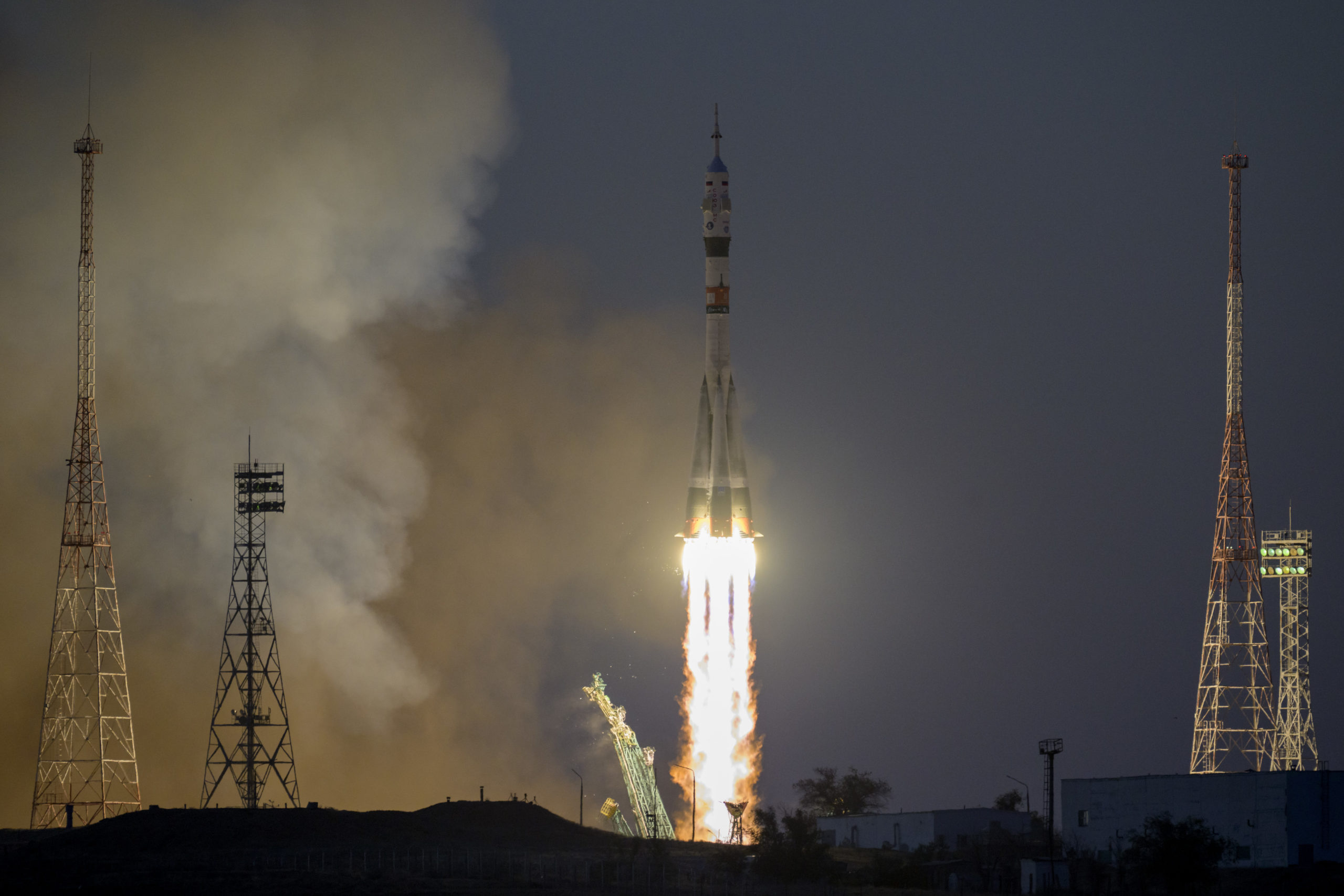
Ten souls will sleep aboard the International Space Station (ISS) tonight, following Wednesday’s successful twilight launch and docking of Soyuz MS-22 and its crew of two Russian cosmonauts and one U.S. astronaut. Veteran spacefarer Sergei Prokopyev and first-time flyers Dmitri Petelin and Frank Rubio launched from Site 31/6 at the Baikonur Cosmodrome in Kazakhstan at 6:54:49 p.m. local time (9:54:49 a.m. EDT), the flaring core stage engine and four tapering side-boosters of their Soyuz-2.1a rocket turning back the encroaching evening. Three hours later, the trio docked safely at the station’s Earth-facing (or “nadir”) Rassvet module to kick off a six-month science mission.
Aboard the ISS to welcome the new arrivals are Expedition 67 Commander Oleg Artemyev and fellow Russian cosmonauts Sergei Korsakov and Denis Matveev, who launched on Soyuz MS-21 in March, together with U.S. astronauts Kjell Lindgren, Bob “Farmer” Hines and Jessica Watkins and Italy’s Samantha Cristoforetti, who reached the station aboard SpaceX’s Dragon Freedom in late April.
As detailed in yesterday’s AmericaSpace story, the flight of Rubio, an Army physician and helicopter pilot of Salvadoran heritage, marks the first time that a U.S. astronaut has ridden a Russian Soyuz since record-setting Mark Vande Hei launched aboard Soyuz MS-18 in April of 2021. Three subsequent Soyuz crews—last October and December and most recently the uphill trek of Artemyev, Korsakov and Matveev in March—were either composed entirely of professional Russian cosmonauts or short-duration visitors.
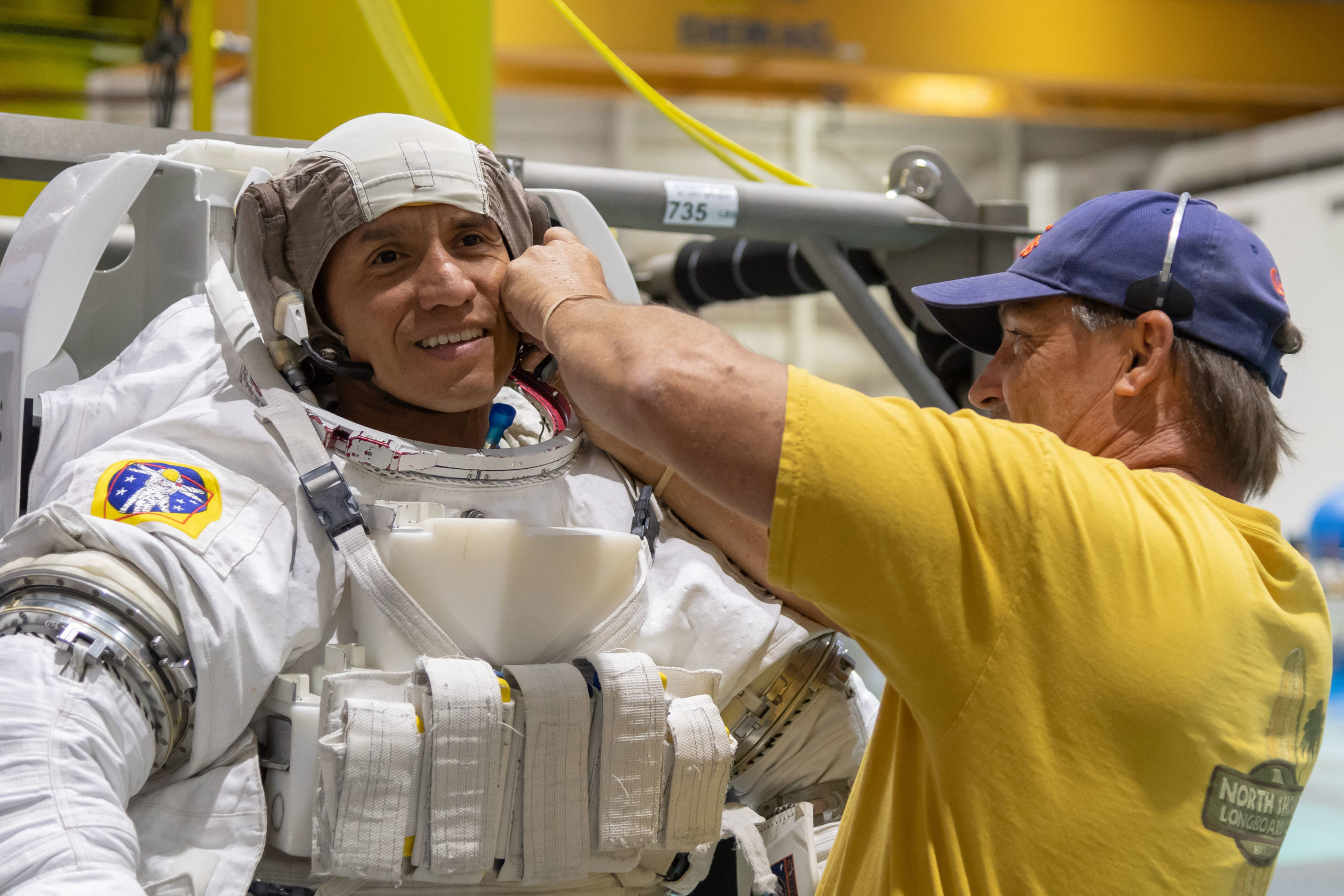
Rubio becomes the first spacefarer to launch under the banner of the integrated crew agreement, inked between NASA and Roscosmos in mid-July. This will see at least one U.S. crew member aboard each Soyuz and at least one Russian crew member aboard each Crew Dragon, to ensure the unbroken presence of at least one U.S. Operational Segment (USOS) and at least one Russian Operational Segment (ROS) specialist on the space station. No sooner than 3 October, Crew-5—which includes U.S. astronauts Nicole Mann and Josh Cassada, Japan’s Koichi Wakata and Russia’s Anna Kikina—will launch from historic Pad 39A at the Kennedy Space Center (KSC) in Florida.
Soyuz MS-22, atop its giant booster, was rolled out to the pad earlier this week, closely watched by the backup crew, Russian cosmonauts Oleg Kononenko and Nikolai Chub and NASA’s Loral O’Hara. Early Wednesday morning, both crews were awakened, showered and ceremonially autographed their doors in Baikonur’s Cosmonaut Hotel. A solemn blessing by a Russian Orthodox priest was followed by Prokopyev, Petelin and Rubio being bussed out to Site 254 to don their Sokol (“Falcon”) launch and entry suits.
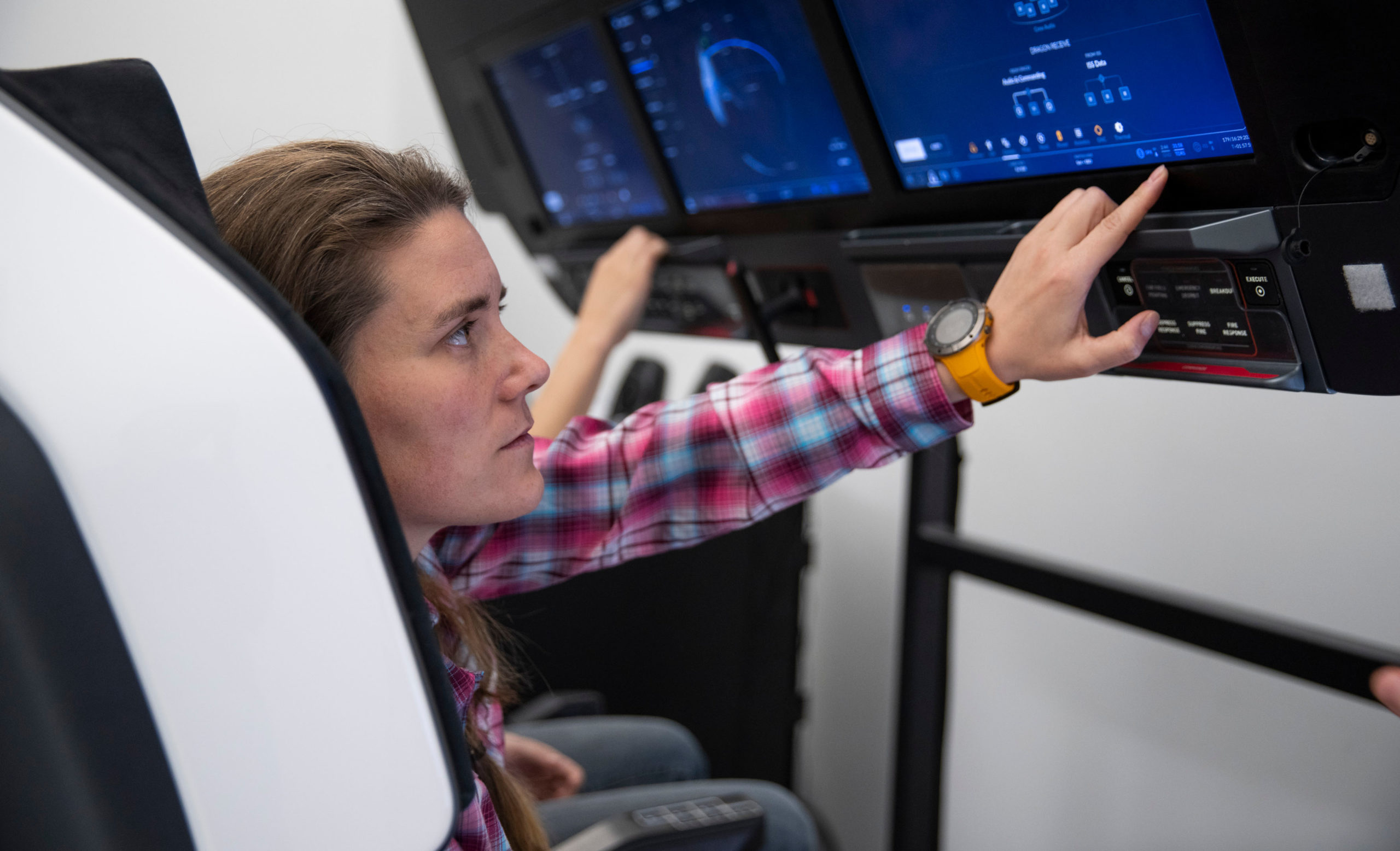
This gave the trio a chance to speak (albeit from behind glass screens) with their friends and families. On hand in the NASA delegation were Chief Astronaut Reid Wiseman, ISS Program Manager Joel Montalbano, Flight Crew Operations Director Norm Knight and Johnson Space Center (JSC) Deputy Director Stephen Koerner. After their final farewells, Prokopyev, Petelin and Rubio were bussed the 25-minute trip out to Site 31/6.
At the pad, they were inserted into their couches in Soyuz MS-22’s tiny descent module. Prokopyev assumed the center commander’s seat, with Petelin to his left side as Flight Engineer-1 and Rubio to his right as Flight Engineer-2. In the final minutes of the countdown, Russian music was piped into the cabin for the crew’s benefit. At T-5 minutes, Prokopyev’s controls were unlocked and internal avionics aboard the spacecraft were spooled into action for launch.
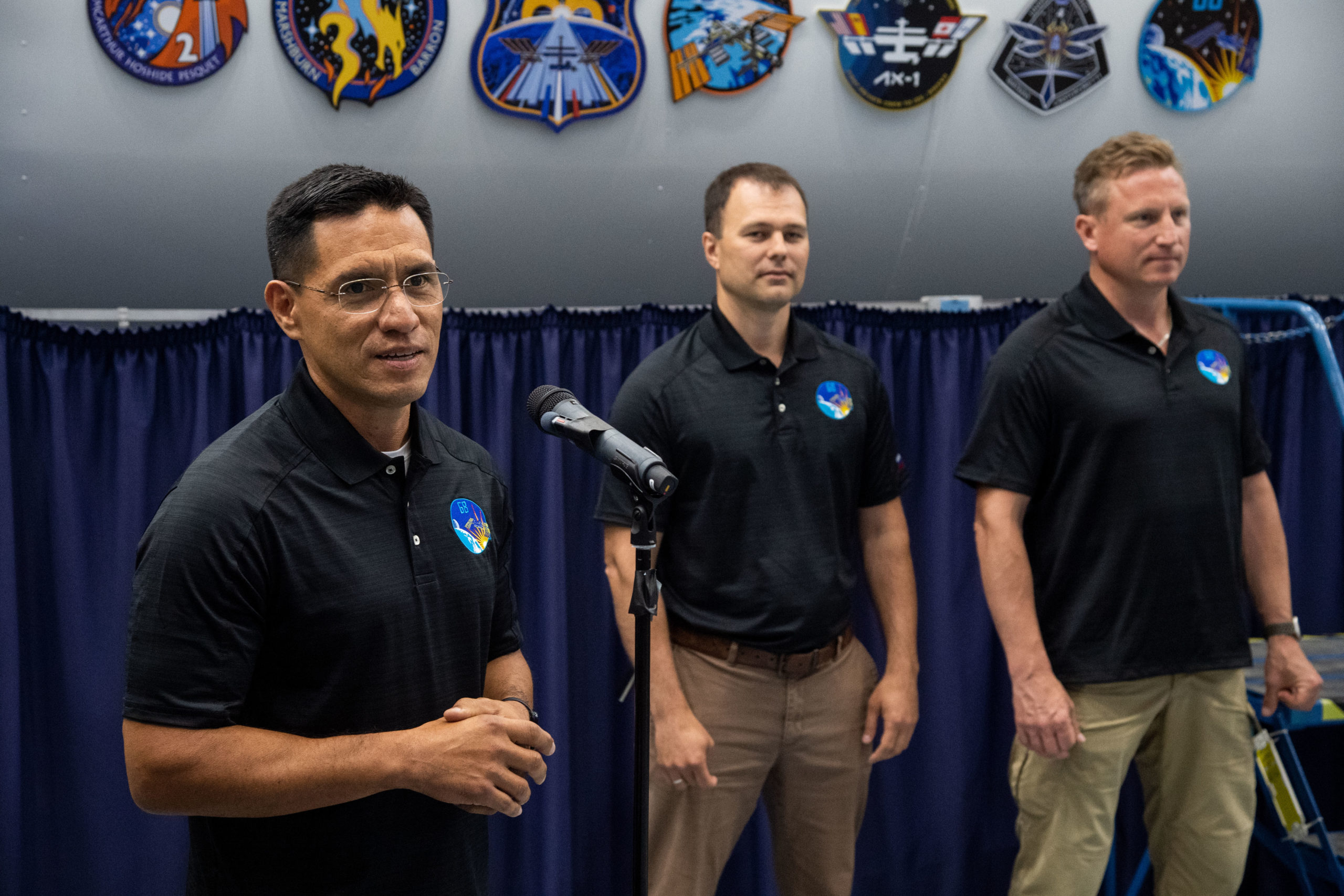
At T-10 seconds, the turbopumps of the RD-108A first-stage engine and the RD-107A engines of the four tapering, strap-on boosters attained flight speed. Five seconds later, the engines themselves ignited, casting an eerie glow across the dull-orange landscape of an early autumn Baikonur evening. “A sunset start,” exulted NASA commentator Rob Navias of the spectacular launch. Finally, Site 31/6’s fueling tower retracted and at 6:54:49 p.m. local time (9:54:49 a.m. EDT) Soyuz MS-22 took flight, punching out a combined 930,000 pounds (422,000 kilograms) of thrust.
Ascent proved nominal, bar a couple of communications dropouts during powered flight, and the Soyuz-2.1a delivered the spacecraft precisely into orbit. At the time of launch, the ISS itself was flying high above northwestern Uzbekistan.
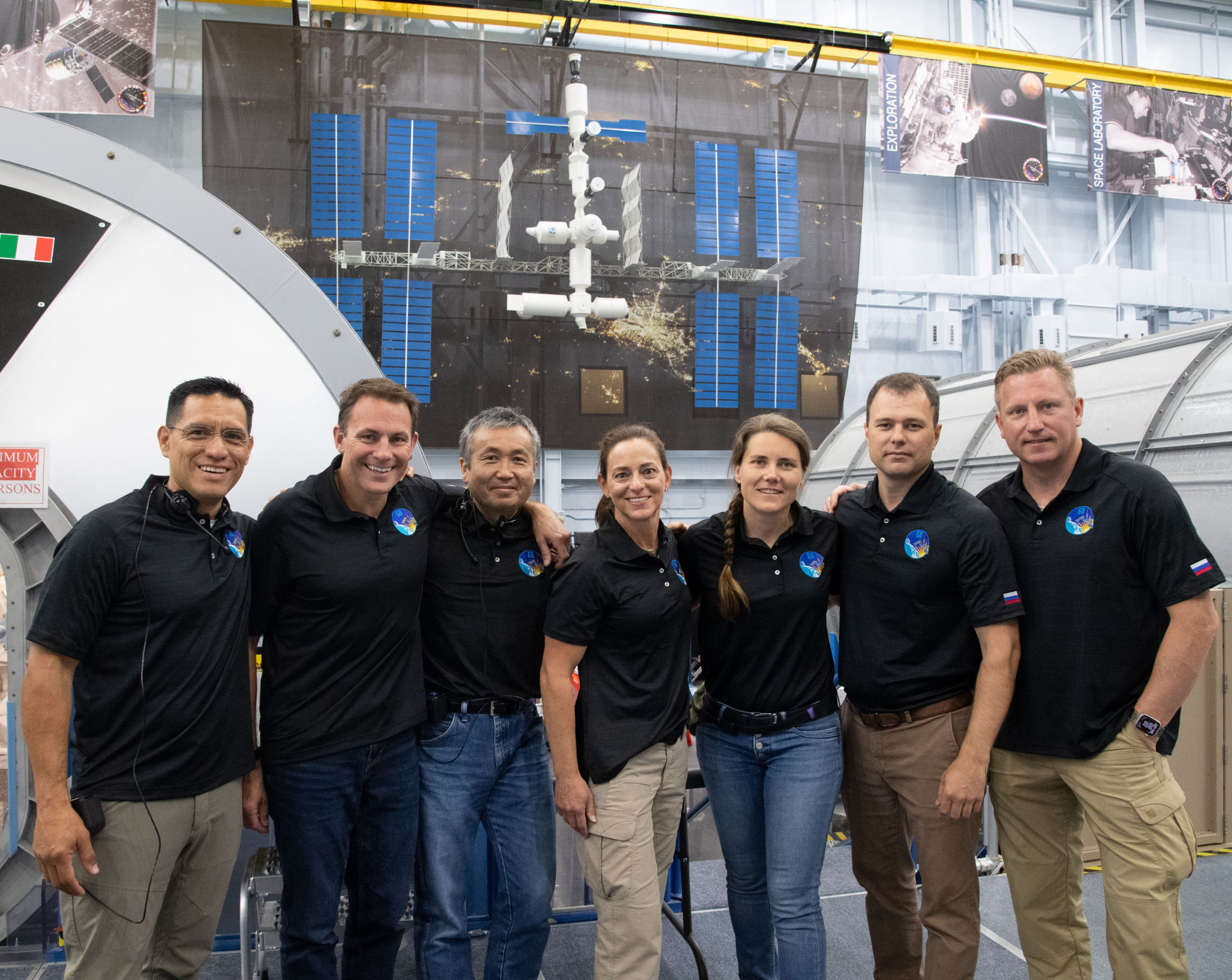
And when Soyuz MS-22 finally separated from the rocket, a little under nine minutes after launch, about a thousand miles (1,600 kilometers), three hours and two full circuits of Earth lay between them and docking with the sprawling orbital outpost. Docking occurred at 1:06 p.m. EDT, some three hours and 12 minutes after leaving Baikonur, following a now-standard “ultra-fast” rendezvous profile.
Following a couple of hours of pressurization and leak checks, Artemyev—clad in dark blue trousers and red shirt—opened the hatches into the station at 3:34 p.m. EDT. At the time of hatch opening, the ISS was flying about 260 miles (420 kilometers) over the South Pacific Ocean.
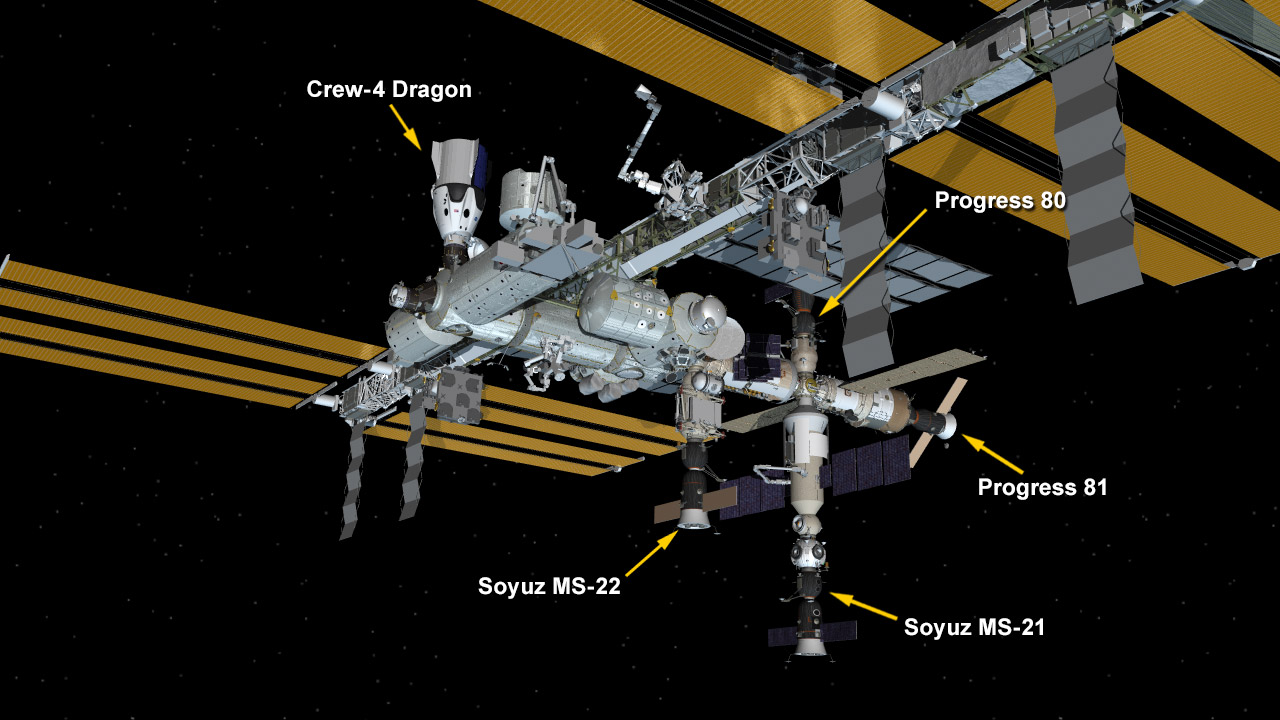
Expedition 67 will function as a crew of ten for the coming week, before Artemyev, Korsakov and Matveev board Soyuz MS-21 and return to Earth on 29 September. At the instant of their departure, Expedition 68 will formally commence, initially under the command of Italy’s Cristoforetti, who becomes the first European woman to helm the station. Her period in command is expected to conclude in mid-October, when she, Lindgren, Hines and Watkins return to Earth aboard Dragon Freedom.
In the meantime, Crew-5’s Mann, Cassada, Wakata and Kikina yesterday entered a formal period of quarantine at JSC in Houston, Texas, ahead of launch. The quartet will ride the once-flown Dragon Endurance—which previously supported Crew-3 astronauts Raja Chari, Tom Marshburn, Matthias Maurer and Kayla Barron—to the station, no earlier than 12:45 p.m. EDT on 3 October.
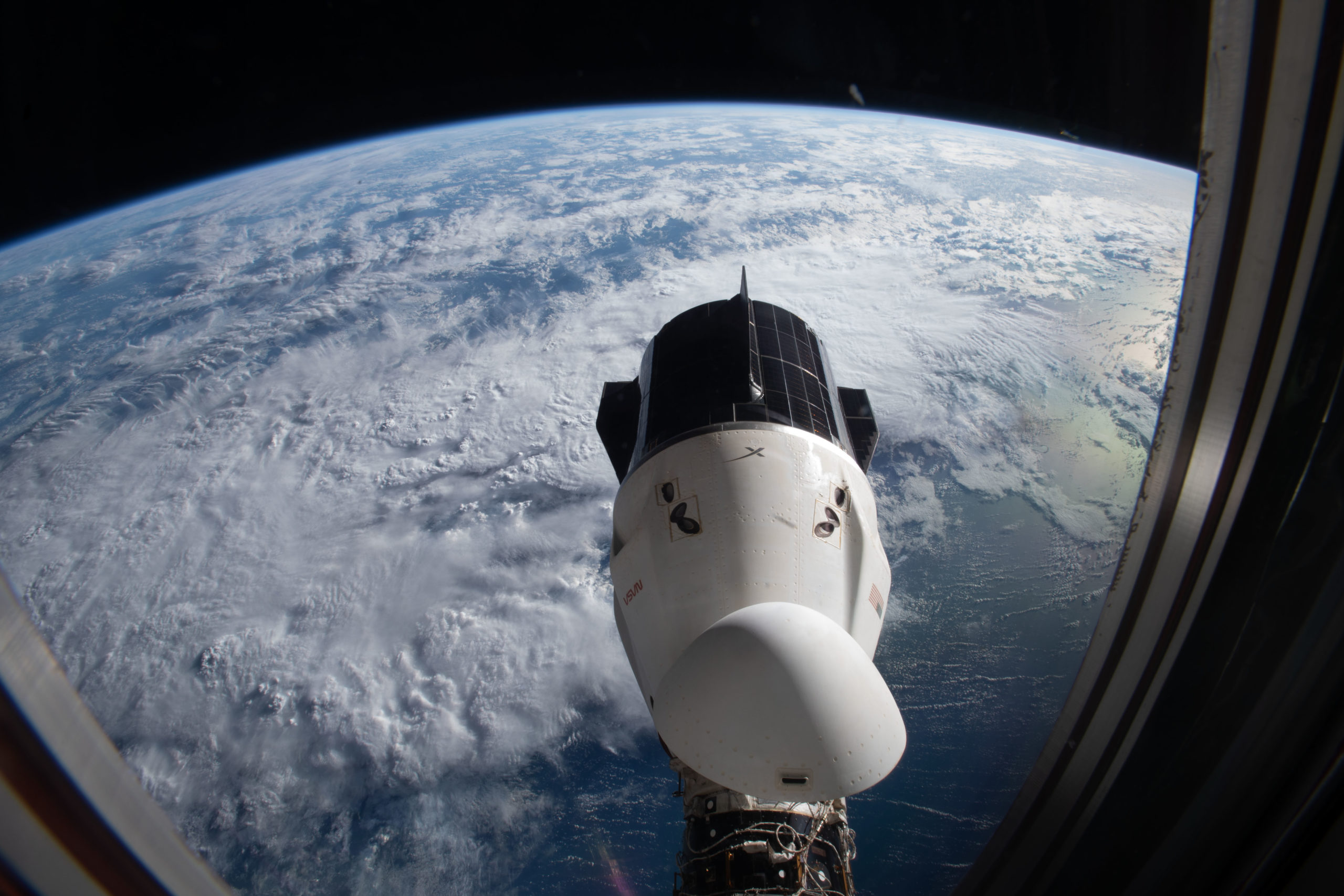
Dragon Endurance logged over 177 days in space on her first voyage, which ended last May. Since then, she has been heavily refurbished with a new heat shield, parachutes and pod panels. Her four forward-bulkhead Draco engines have all flown before. The “inter-stage” of her Falcon 9 booster was also replaced after sustaining damage on a road bridge during transit earlier this summer.
With Crew-5 aiming for six months on the ISS, this mission will push Dragon Endurance’s time on-orbit to a cumulative year in total, becoming the first Crew Dragon vehicle to approach this milestone. Her three spacefaring sisters—Endeavour, Resilience and the currently-in-orbit Freedom—have chalked up their own days in space, with Endeavour currently leading the pack on 280 days across three missions.




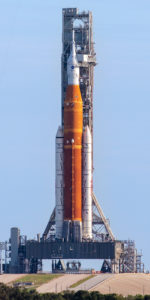
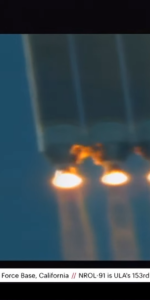
5 Comments
5 Pings & Trackbacks
Pingback:Northrop Grumman Launches NG-18 Cygnus to Space Station, Honors Pioneer Sally Ride - AmericaSpace
Pingback:Northrop Grumman Launches NG-18 Cygnus to Space Station, Honors Pioneer Sally Ride - Space News
Pingback:Northrop Grumman Launches NG-18 Cygnus to Space Station ... - AmericaSpace - World news | Fast news | Us News
Pingback:NASA, Roscosmos Revise ISS Crew Schedule, Following Soyuz Leak - AmericaSpace
Pingback:NASA, Roscosmos Revise ISS Crew Schedule, Following Soyuz Leak - Space News